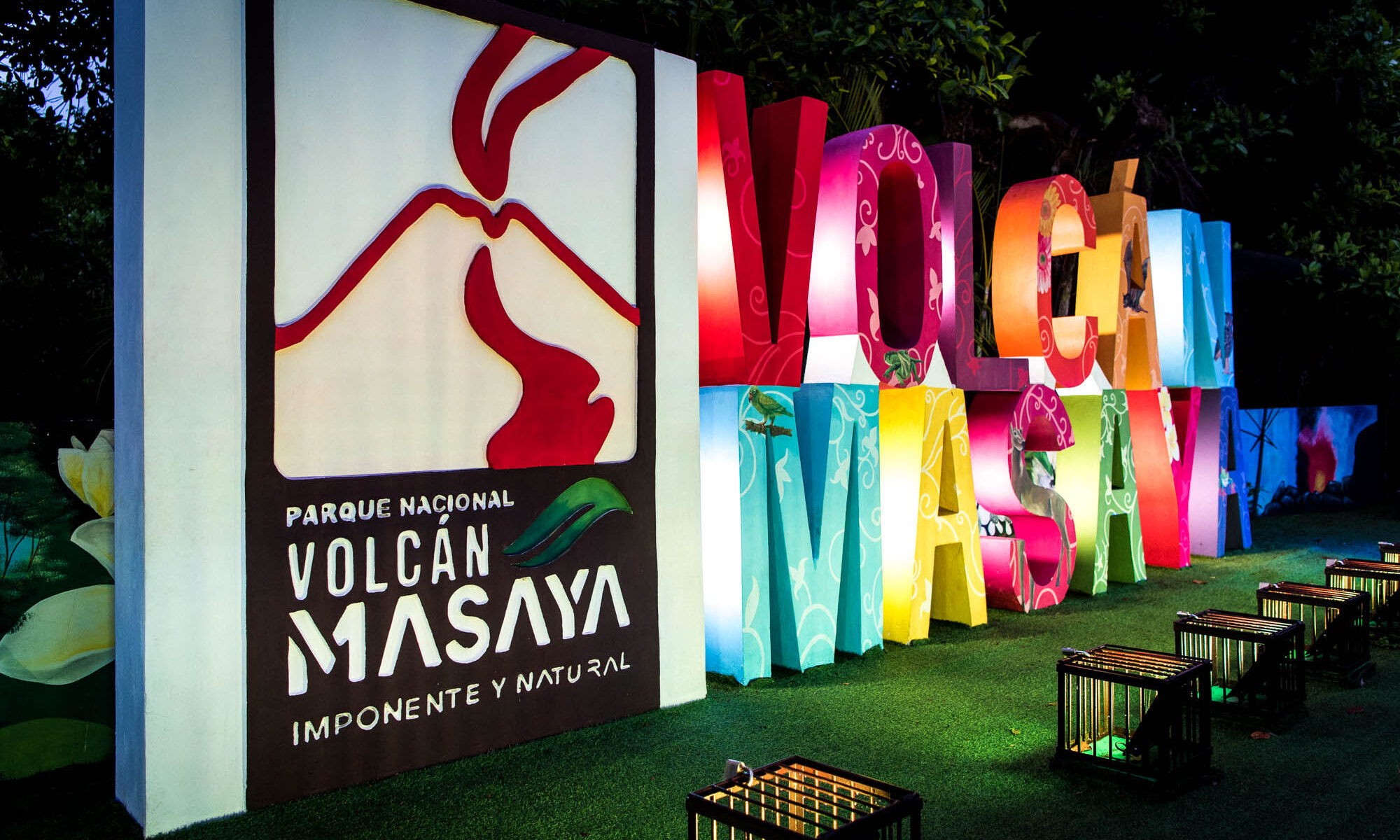Managua, where we last left you, driving around the city on a hunt to find a laundromat, there were, after all, a lot of wet sheets and bedding to take care of. It was however, Sunday, and although this was the capital, finding a lavanderia that was open, was proving a little difficult. On our third attempt, we were successful, rocking up at ‘Laundry Express’. And talk about express, our four loads of washing were cleaned, dried and folded in just over two hours, just in time for our arrival at Casa Chameleon.
Casa Chameleon is a creative space for the expressive arts, which also just so happens to serve as a refuge for Overlanders in need of a place to camp in the city. Francisco who hosts a series of community projects here is usually also busy working on his T-shirt designs. While we were there, he sewed and printed ten T-shirts, including a personalized one for Zoe (upon her request), 50 ‘MeatAroundTheWorld’ stickers and some flag stickers for our Silverskin. What a talent! We enjoyed getting to know Francisco and his family and sharing some top sirloin beef of course!
South of Managua lies Masaya, a volcano that is famous for its “lava lake”. It hosts Nicaragua’s most active crater and because of its direct and easy access (one can drive right up to the crater’s rim), is also one of the country’s most popular hotspots. We arrived just after sunset ready for the night show, peering right into the depths of the hot orange magma bubbling below, or shall we say, “La Boca del Infierno” (the Mouth of Hell) as the Spaniards christened it back in the 16th century.
Fortunately, for us, we walked away untarnished and enjoyed a peaceful night’s sleep camped outside the National Park’s entrance, all before discovering what those very Spaniards made of nearby Granada, back in the day.
Granada is the first European City to have settled in the Americas, dating back to 1524. The colonial buildings that still remain centuries later in a city set in the shadows of the extinct Mombacho Volcano and on a lake filled with beautiful islets, make up for what we believe is the most picturesque town we have seen in Nicaragua… Oh, and the classic horse and carriages which circle the centre are a very nice touch!
We don’t usually go on guided city tours but we’re glad Gabriel persuaded us to hop on to his carriage. He spoke a wonderfully clear and slow Spanish, whilst giving us in-depth details of Granada’s eventful past. As well as suffering many pirate invasions, there were many civil wars to be had, including that of William Walker. William Walker was an American who installed himself as president in 1853 and declared English the official language of Nicaragua. Three years later, the Central American countries got together to attack him and as he fled, he sent the city down in flames.
The iconic Iglesia La Merced has been burned down a number of times and because of its many rebuilds, now displays a variety of architectural styles. Not only did we get to see this, but like Rapunzel, we got to climb the bell tower and take in the most stunning view of the city.
No sooner had we waved our goodbyes to Gabriel and his coach driver than our next guide came approaching us. This time it was Julio, yes, our second Julio of the fortnight. He had convinced us to go on a boat tour around the islets. Why not?
Lake Nicaragua is the largest lake in Central America and its 365 tiny islands that scatter around Granada, are the result of Volcán Mombacho’s grand eruption 20,000 years ago. Nowadays, the islands almost form their own unique community, with two schools dotted across the waters and even a cemetery. The remainding islets occupy private holiday homes and mansions bought by wealthy Nicaraguans and ex-pats.
Not only did we get to gawk at these properties but we learned a great deal about the flora and fauna of the sweet water and fed some spider monkeys. They seemed to have snapped up their own private island and were expecting us. As we neared their shore they rubbed their tummies, signaling that it was eating time! We joyfully fed them cornbread and leftover pizza.
From one lago to another- this one way smaller- it was time to check out the crater lake of Apoyo. With only a 20-minute drive from Granada, this location with warm bath-like waters was a much more preferable camping option than that of an overnight stay in a city carpark. And it was beautiful!
The view back to shore when swimming was equally as stunning as when looking out! This crater is surrounded by thousands of tropical dry trees and plants, and of course is home to a variety of animals, including howler monkeys, who were happy to hang out in the trees above our camper.
We took advantage of the pleasant temperature of the freshwater and all whilst listening to the smooth sounds of the Marimba. Yes, you heard us right! We couldn’t believe it- we hadn’t managed to watch a live performance of this percussion instrument in Guatemala (Marimba is Guatemala’s national music) but here from this lagoon the pure sounds of the wooden bars being struck by mallets had caught our attention. We stepped out of the waters and into the terrace of a restaurant where locals were dancing away, celebrating a family member’s birthday! We of course were party crashing in our swimwear but we knew this opportunity wouldn’t come again soon.
Our final stop of this whirlwind tour of Nicaragua was Ometepe Island. We were back on a boat, but this time brought Silverskin along for the ride.
Omotepe is very popular with tourists and offers two volcanos to explore, the very steep Concepción (also active) in the north, and the Maderas in the south. One can hike both, but with the heavy rainfall descending upon us most of the weekend, we decided to just hang out at ‘Ojo de Agua’ instead. Here you can find two natural mineral pools fed from the springs of Maderas. Yes, yet another marvelous example of a volcano at work!
… and the C4 countries (Guatemala, El Salvador, Honduras, Nicaragua) are experts at showcasing these wonders! From the grand eruptions of Fuego, to the opportunity to roast marshmallows over lava vents on Pacaya, to gazing at the turquoise splendor of Santa Ana, and sandboarding down Cerro Negro, to being able to soak in the warm volcanic waters of Apoyo, to now plunging into refreshingly cold mineral pools- We’ve had the pleasure of experiencing it all!
There is so much to travelling the world by land; the slower pace gives you more time to zoom in on the country’s beautiful nature, hang out with its hospitable inhabitants and reunite with like-minded travellers, following the same dream.
In fact, when leaving Ometepe, we actually bumped into three sets of Overlanders, all of whom we’d met previously during the past year.
Vincent and his family from Switzerland, (we’d met them in Oaxaca, Mexico almost a year ago), French backpacker Nunu who we’d had the pleasure of acquainting ourselves with in El Salvador (her and her Belgian friends were hitchhiking and were now in need of a ride), and Jim, Colleen and their three children. We’d seen them in Granada, ‘Ojo de Agua’ and now here on this ferry.
It really is a small world, and there’s no place we’d rather be right now, than exploring it this way!
Thanks for reading, and we’ll ‘meat’ you guys around the world!








